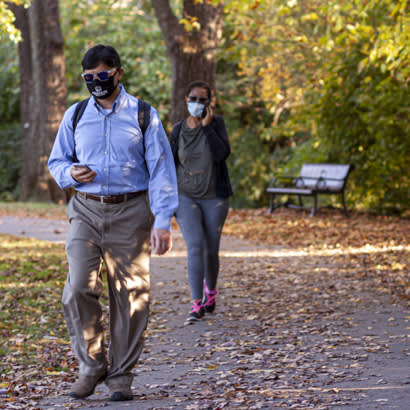
For an enhanced digital experience, read this story in the ezine.
The coronavirus (COVID-19) pandemic has impacted the operations of parks and recreation departments throughout the country, often resulting in canceled or scaled-back sports programming and community center closures. Since the issuing of the stay-home-work-safe order in April 2020, the city of Houston, Texas, has seen markedly more use of its nature spaces. In particular, there has been a significant increase in the use of park-trail systems in the city, as people have sought activities in which they can get out of the house while still keeping themselves safe through physical distancing.
Within the past several years, the Houston Parks and Recreation Department (HPARD) began devoting more resources to the preservation of natural areas. This shift in emphasis is due in part to the multiple catastrophic flooding events that have impacted the region, including Hurricane Harvey in 2017, which inflicted more than $1.25 billion in damage. Park natural areas provide a host of benefits for the Houston area: the trees store carbon, the vegetation captures sediment and filters pollutants, the roots of trees and grasses prevent erosion along waterways, the soil and plants absorb floodwaters, and the diverse mix of flora support native wildlife. Under current COVID-19 restrictions, park officials also are beginning to recognize the importance of these areas for the passive recreation opportunities they provide.
Nature Preserve Ordinance
Although it doesn’t appear this way today, Houston was once full of vast open spaces covered in coastal prairie habitat with thick forests lining its numerous bayou systems. It remains one of the most biodiverse regions in the country with the merging of coastal wetland marsh, coastal prairie, riparian forest and piney woods. But Houston is also a growing city and its remaining natural habitats, now only present in patches throughout the city, experience increasing threats from development. HPARD aims to permanently preserve the remaining large areas of habitat in city parks through a Nature Preserve Ordinance focused on preventing development in more than 7,500 acres of parkland.
Under the ordinance, outdoor activities in the affected park areas will be restricted to passive recreation, such as hiking and birdwatching, and amenities will be limited to trails, benches, signs and bird-friendly lighting. Existing and future sports fields, parking lots and buildings will only be erected in specific sections of the affected parks and excluded within the nature preserve boundaries of the ordinance. Of the 380 parks in the city’s portfolio, 26 have been identified for protection. Although the park number seems low, preservation acres total more than 20 percent of the total parkland for the city of Houston. Of the targeted parks, approximately 75 percent of each park will fall within the nature preserve designation, and the remaining 25 percent will be available for active recreation amenities.
However, land preservation is just the beginning of Houston’s conservation efforts. Research conducted in some of the city’s forested areas have shown that approximately 40 percent of vegetation is filled with harmful invasive species, such as Chinese tallow. Therefore, each nature preserve will have a management plan that outlines specific habitat goals and plans for improvement. Additionally, Houston’s tree protection ordinance is currently undergoing a revision: To deter the planting of less desirable species that may become a problem to natural areas in the future, the city is developing a new all-native tree list that will help support the establishment of species native to Houston and its surrounding counties.
Prior to the COVID-19 pandemic, HPARD’s motivation for land preservation focused on the unseen benefits that nature can provide. Now that HPARD is witnessing a surge in use of natural areas, it is apparent that the recreation aspect is vitally important to park visitors. HPARD is currently mapping all nature trails throughout its park system and creating online trail maps to guide visitors through some of its large, forested parks. In the past, HPARD has chosen not to actively assist visitors in navigating these big, wooded areas: encouraging people to enter and explore them seemed irresponsible and potentially unsafe. But now HPARD has realized that nature trails allow park visitors to experience the outdoors in a safe but enjoyable way.
Making an Impact
With a goal to present the Nature Preserve Ordinance to the council before the end of the year, Houston has the opportunity to take the lead in urban conservation with the city’s parks department stepping to the forefront. Supported by an inclusion in the Mayor’s Resilient Houston Plan and Houston Climate Action Plan released earlier this year, this ordinance will have a huge impact on Houston’s residents, both people and wildlife, and offer Houstonians a safe opportunity to enjoy these beautiful nature spaces that dot the southeast Texas landscape, home to the fourth-largest city in the country.
Kelli Ondracek is Natural Resources Manager for the Houston Parks and Recreation Department (kelli.ondracek@houstontx.gov).

